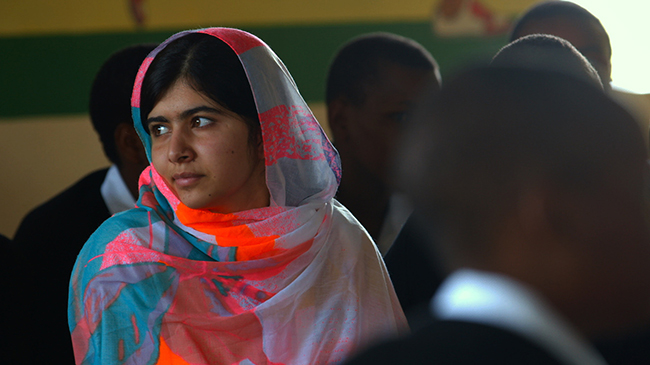Malala Yousafzai’s story captivated the world in 2012, when the Taliban shot her in the head as punishment for speaking out against the ban on female education. Since her recovery, she’s become a global leader in education equality.
In 2014, Malala became the youngest-ever Nobel Peace Prize laureate at 17 years old. Director Davis Guggenheim’s documentary, “He Named Me Malala,” paints a personal, family-oriented picture of teenage Malala’s post-recovery world. The documentary begins with referencees to the shooting but centers on her present life in England. The film cuts back and forth between Malala’s current experiences as a traveling activist and student and her memories of growing up in the Swat Valley of Pakistan.
Guggenheim focuses considerably on Malala’s relationship with her parents and brothers, aiming to present a complete picture of the teen activist’s home life and upbringing. He succeeds in capturing Malala’s own personal life journey and its relation to her family, rather than the specifics of her global education initiatives and political ideologies.
The director sensitively depicts the struggle involved with the Yousafzai family’s relocation to England after Malala’s shooting. Guggenheim explores the family’s discomfort in their new home and Malala’s wishes to one day return to the Swat Valley.
To balance these somber sequences, the film lightly presents Malala as a teenage girl who struggles with bad grades and enjoys looking at pictures of Brad Pitt and Roger Federer.
Guggenheim rarely asks probing questions about the Taliban or Malala’s personal views. However, asking difficult questions — to which Malala has provided fiery, eloquent responses in past interviews — could have brought more depth and relevance to the film’s content.
Malala’s father Ziauddin Yousafzai presents much of the commentary and reveals explanations of his own internal conflicts in weighing the potential risks put on his family. An outspoken political activist and teacher himself, Yousafzai allowed Malala to make her own decision in publicly speaking out against the Taliban’s ban on female education while still living in Pakistan.
Guggenheim frequently utilizes extended animated sequences, hand-drawn by animator Jason Carpenter, to visually portray the stories told by Malala and her father. The repeated symbols of a pink backpack and swirling text appear throughout the animated sequences to visualize the emphasized themes of female education and the power of speech. At times, the storybook-style animations present overly idealized versions of Malala’s youth and the family’s history.
Other visual elements used during voice-over retellings — such as blurred, recreated hospital scenes and assorted stills of Pakistani schoolgirls — also fell short. These weaker visuals were carried along only by Malala and Ziauddin’s engaging audio, as well as the interspersed real-life videos from the events.
The film presents the significance behind Malala’s naming after Malalai of Maiwand, a famous warrior woman who died encouraging retreating troops to return bravely to battle. The parallels between Malala and the female warrior present her life as practically predetermined by her father’s naming. Both Malala and Ziauddin conclude that her life as a hero and activist was not predestined but rather a series of ongoing personal choices.
“He named me Malala,” Malala said. “But he didn’t make me Malala. This is my life, and I’m going to live it.”
While at times lacking in visual poignance and hard-hitting content, “He Named Me Malala” presents an intimate picture of an astonishing young woman and the family bonds that support her influential life journey.















